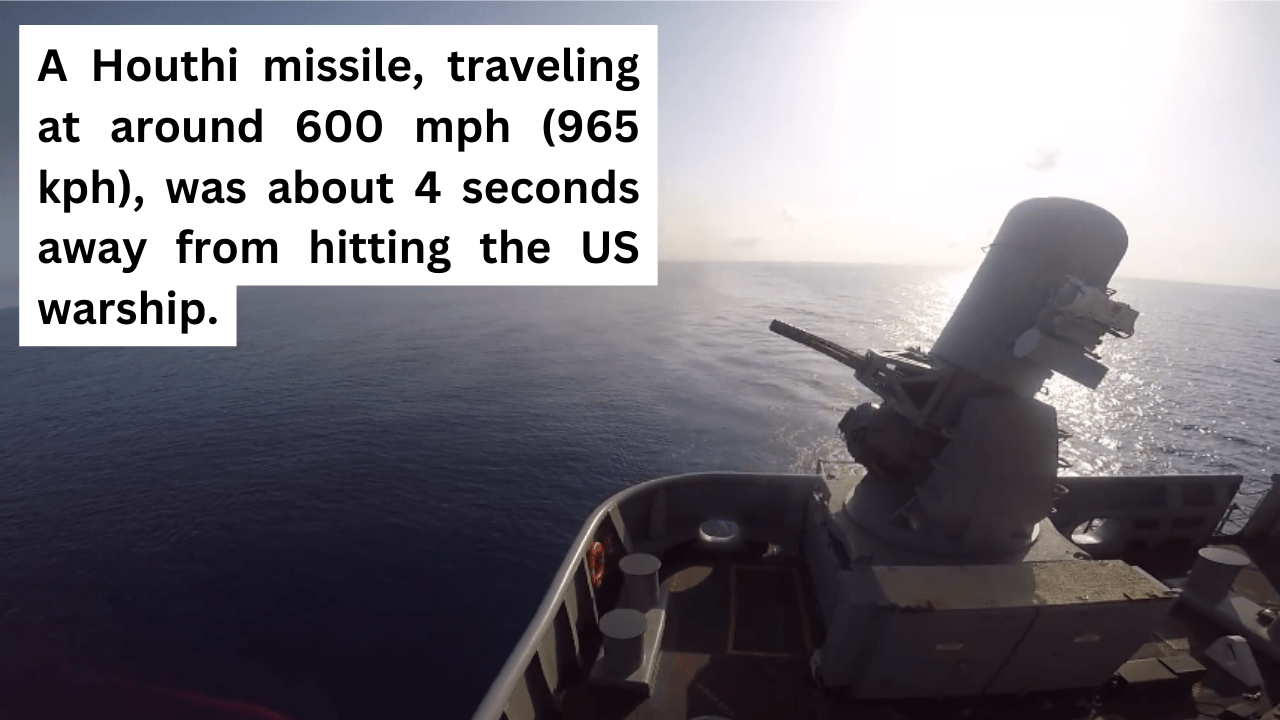USS Gravely Phalanx CIWS: The high seas are a battleground of evolving threats, and naval vessels like the USS Gravely stand at the forefront, equipped with cutting-edge defense systems. One such system that has recently gained prominence is the Phalanx Close-In Weapon System (CIWS). In this article, we delve into the crucial encounter where the USS Gravely deployed its Phalanx CIWS against a Houthi cruise missile, exploring the intricacies of this advanced defense mechanism.

As the geopolitical landscape shifts, naval vessels face diverse challenges, making advanced defense systems indispensable. The USS Gravely found itself in a critical situation, prompting the activation of its last line of defense – the Phalanx CIWS. This article unravels the narrative of this maritime clash and the role played by the Phalanx CIWS.
What is Phalanx CIWS?
USS Gravely Phalanx CIWS: A Technological Safeguard
Boldly positioned as a technological marvel, the Phalanx CIWS is not merely a piece of equipment; it is a safeguard against imminent threats. This section provides an in-depth exploration of the system’s rapid-response capabilities, radar-guided precision, and its pivotal role in countering airborne and seaborne dangers.
The gun sub-system utilizes a Gatling gun configuration comprising a rotating cluster of six barrels. This Gatling gun can discharge 20mm ammunition at a rate of either 3,000 or 4,500 rounds per minute, sustaining a continuous burst of 60 or 100 rounds. The Close-In Weapon System (CIWS) has become a fundamental self-defense mechanism, adopted across various ship classes to effectively counter low-altitude anti-ship cruise missiles (ASCMs).
As the theater of warfare shifted from open oceans to littoral waters, CIWS has undergone adaptations to address the heightened dynamics of ASCMs and the evolving threats faced by surface ships. The developmental progression of CIWS has transitioned from Block 0 to Block 1, Block 1A, and Block 1B Phalanx surface Mode. The culmination of this evolution is the Baseline 2C improvements, providing an integrated capability for multi-weapon operations.
USS Gravely’s Critical Moment
In the face of a Houthi cruise missile, the USS Gravely showcased the prowess of the Phalanx CIWS. Detailing the events of this critical moment, we analyze the swift decision-making, crew coordination, and the activation protocol that culminated in the successful neutralization of the threat.
The Last Layer of Defense
The Phalanx CIWS serves as the last layer of defense for naval vessels, acting as a shield against incoming attacks. Boldly positioned on the ship, its significance cannot be overstated. This section elaborates on the strategic importance of this defense mechanism in safeguarding naval assets.
Human Expertise in Naval Defense
Behind every advanced system is a team of skilled individuals. Explore the human element in naval defense as we highlight the expertise and coordination displayed by the USS Gravely’s crew during the deployment of the Phalanx CIWS.
Swift and Decisive Activation Protocol
When seconds count, the activation protocol of the Phalanx CIWS proves to be a game-changer. This section dissects the swift and decisive measures taken to activate and deploy the system, ensuring the protection of the USS Gravely.
Strategic Implications for Modern Naval Warfare
The successful deployment of the Phalanx CIWS against a Houthi cruise missile holds broader implications for modern naval warfare. Analyze how this incident shapes strategic thinking, influencing the future development and deployment of defense systems.
Beyond the immediate battlefield, the global community recognizes and acknowledges the innovations in naval defense. Explore how the successful use of the Phalanx CIWS by the USS Gravely contributes to the system’s global recognition.
In conclusion, the encounter between the USS Gravely and the Houthi cruise missile exemplifies the critical role played by advanced defense systems like the Phalanx CIWS. As naval warfare evolves, these systems become instrumental in ensuring the safety and security of maritime assets.
In the ever-changing landscape of maritime security, the Phalanx CIWS stands tall as a testament to technological innovation and human ingenuity. This encounter serves as a reminder of the constant need for advancements to protect our naval forces on the high seas.